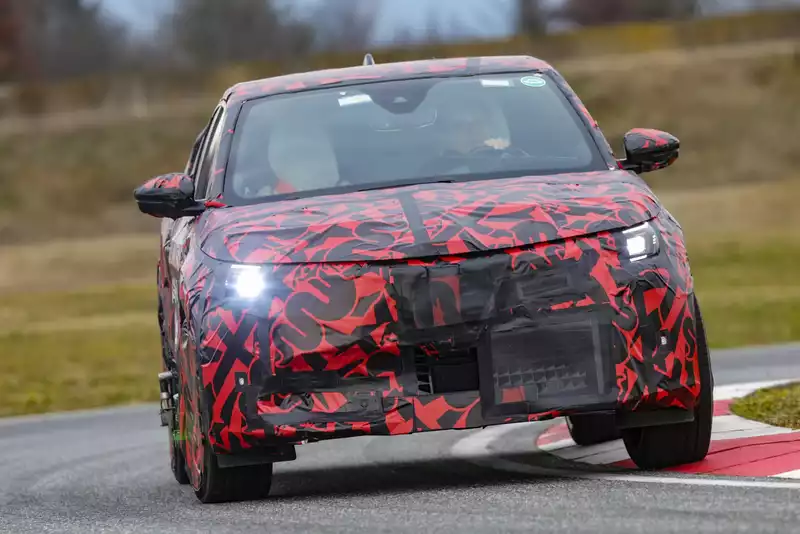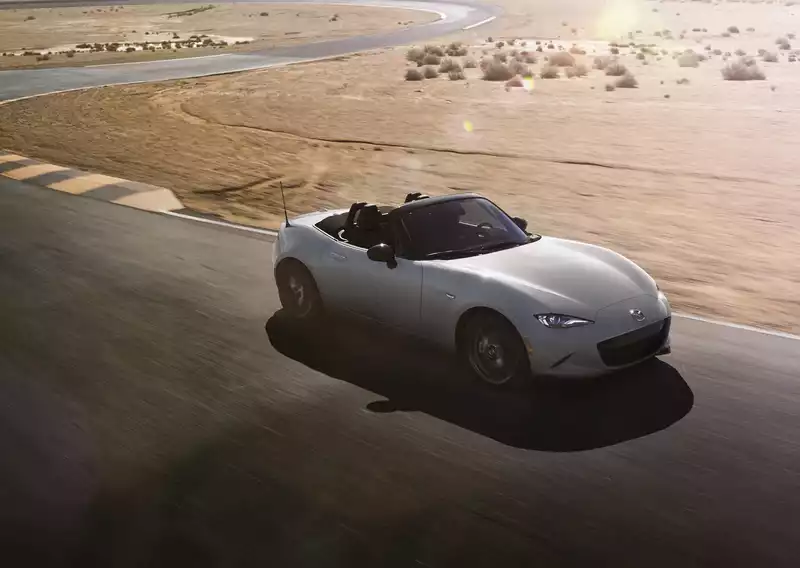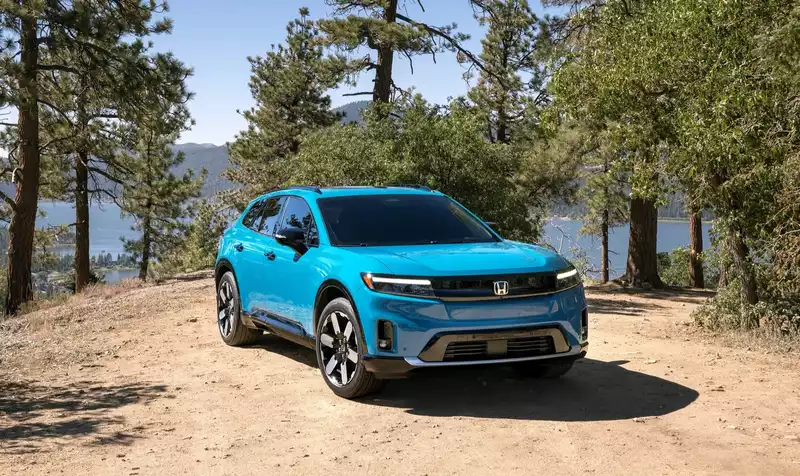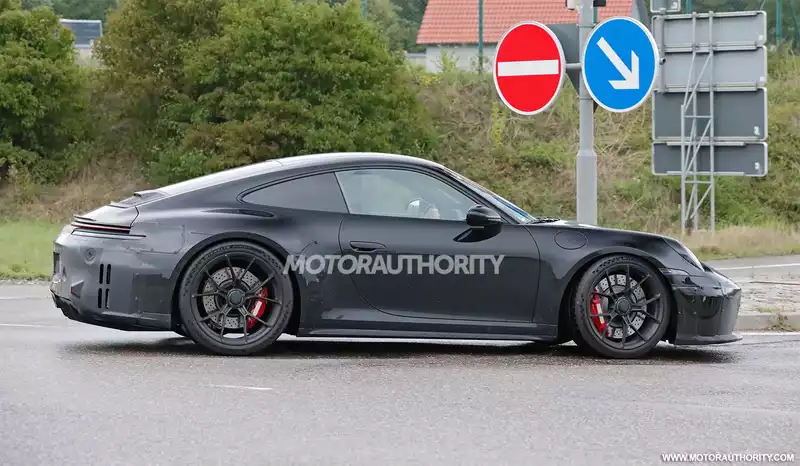Review Lamborghini Huracán Tecnica strikes a balance between track and street
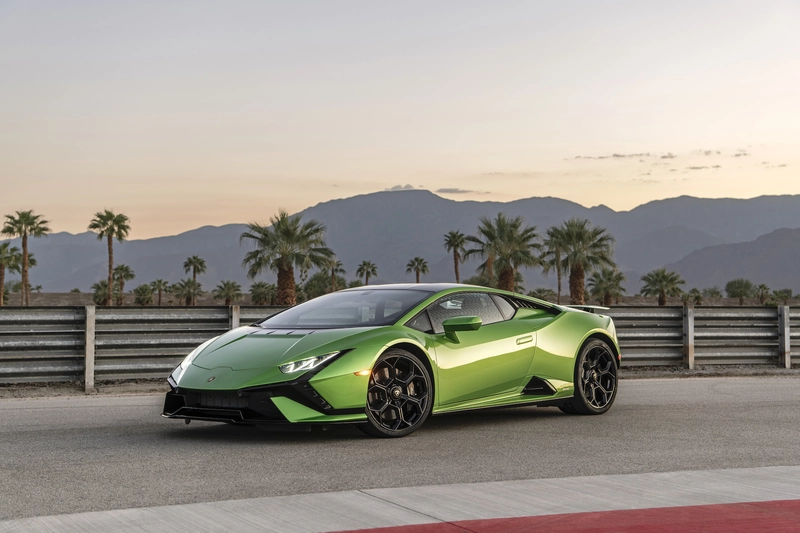
Blue
Driving in Corsa (track) mode on the 1.8-mile south course at the Thermal Club outside Palm Springs, California, a blue shift light tells me that the redline on the naturally aspirated 5.2-liter V-10 is approaching 8,500 rpm The redline of the naturally aspirated 5.2-liter V-10 is approaching 8,500 rpm.
The V-10 of the 2023 Lamborghini Huracán Tecnica screams like a hornet's nest. Pressing the shift paddle on the right magnesium steering wheel, the sweep digital tachometer drops to 6,500 rpm. The engine immediately accelerates to the next blue warning.
The Tecnica bridges the gap between the RWD base model of the Huracán Evo and the Lamborghini Huracán STO, which specializes in circuit driving and enhances the pulse of the car, but it also features many improvements over the STO. Engine tuning is one of them, and while the Tecnica is certainly a track machine, it is a more approachable supercar than the STO, and more comfortable to drive on a daily basis. As with all Lamborghinis, the Tecnica's quirky cues and controls take time to appreciate.
On my first experience in Corsa mode, I noticed the red bar in the cluster extending toward the center, but was caught off guard by the blue shift light and hit the rev limiter several times.
Now, however, the V-10 is able to shift gears well enough to unleash its full power; compared to the 601-hp Huracán Evo RWD, the Tecnica has a more free-flowing exhaust and a more direct throttle response, and the ECU's Tuning is different. These changes increased the V10 engine's maximum output of 631 hp and maximum torque of 417 lb-ft from 5,800 rpm to 6,500 rpm.
No problem here, the V-10 is a horsepower engine anyway, and if you have to rev it up to get the best power, I'm all for it; the V-10 launches this 3,040-pound (dry weight) car from 0-62 mph in just 3.2 seconds and gets to 202 mph 202 mph in a single bound. That's the kind of performance you expect from a street car.
One thing I learned is the 7-speed dual-clutch transmission. In Corsa mode, it requires manual shifting, but on my first drive in Sport mode, I couldn't figure out how to get it to shift automatically. To start driving, you simply pull the right paddle, but the transmission will not go into automatic mode unless you press the M button on the center console. This is counter-intuitive; I thought M would switch to manual, but instead it switches between the two modes.
In Sport, shifting up is automatic in manual mode, but downshifting is not. So I was stuck in fifth gear, watching Lamborghini Super Trofeo racer Brandon Gudovich sprint far ahead in the first lead-follow exercise. This is a habit, I noticed during the second 12-minute session.
On the second run, I managed to shift into automatic mode and found that while the transmission never got stuck in high gear, it took a long time to downshift quickly into the lowest possible gear and sometimes would not downshift at all. Shifting down, however, is done without unbalancing the car. Still, the Corsa's manual shifting is more responsive and more enjoyable.
Corner balance
The South Palm circuit has several corners that reveal the handling characteristics of the Huracán Tecnica, which vary from mode to mode and are strongly influenced by the rear wheel drive layout and standard rear axle steering
The Tecnica is always balanced, but more playful in Sport mode. There are several long corners with smaller radii that require patience to wait for slower apexes. These corners can be dealt with by adding or subtracting light maintenance throttle and, if necessary, occasional braking. In these corners, you can feel the car walking the line between understeer and oversteer, depending on whether you step on the gas pedal or not. Accelerate to maintain speed and ease off to help the car turn.
In Sport mode, the balance is skewed toward the rear, pulling more lines on the stability control to loosen the rear tires. However, on a track car with Bridgestone Potenza race tires, 245/30R20 front and 305/30R20 rear, it is much more difficult than with standard Potenza Sport tires.
Thankfully, any slide is short, sweet, and easy to catch. This is a mid-engine, 631-horsepower supercar, and while the limits are high, they are easy to approach. I wouldn't think of trying to drift the Tecnica on this track, but Sport is the mode that makes it possible.
Corsa mode aims for even better balance and faster lap times, and it delivers. In Corsa, it is easy to drive the line between oversteer and understeer, and the lap times reflect that balance. According to another Trofeo driver, his lap times were three seconds faster by the end of his run in Corsa mode. It may just be that he drove better as he got used to the corners, but on the short 1.8-mile track, this is a significant improvement, and the mode must have something to do with it. The stability control settings for both modes are tuned to be more fun and perform better in Tecnica than in Evo.
Another feature that Tecnica shares with the Huracan STO is the ultra-sharp steering that is immediately noticeable on the track. The Tecnica turns in with purpose and the steering is slightly weighted and stable.
The rear axle steering can turn up to 3.0 degrees opposite the front at speeds up to 37 mph and slightly with the front at higher speeds. This helps turn the car in tight turns and helps stabilize the car in high-speed corners. The standard rear torque vectoring also shortens corners by sending more power to the outside wheels through the turn.
Aerodynamics also aid stability, although not as much as STO. Sixty percent of Tecnica's body panels are newer than those on the Evo FR and were developed to reduce weight. The rear engine cover and front hood are made of carbon fiber. The front mask has been redesigned with a new air curtain (a first for Huracán), the rear diffuser has been reworked, the new rear mask makes room for new hexagonal exhaust outlets, and the unique rear wing is much lower than the STO's huge park bench position. The changes give the Tecnica 35% more downforce and 20% less aerodynamic drag than the Evo RWD.
The Tecnica also features dedicated brake cooling deflectors and caliper ducts for the standard 15.0-inch front and 14.0-inch rear carbon ceramic brakes. According to Lamborghini, this cooling reduces brake fluid temperature by 9%, brake disc temperature by 7%, brake pad consumption by 13%, and pedal travel by 5%. These are all fun numbers, but at the end of the day, the six-piston front and four-piston rear brakes feel strong with a fairly firm pedal and get the job done time and time again on this track in temperatures around 98 degrees.
The experience from the cockpit is a mix of race car and everyday driver. The standard sport seats are supportive and not constrictive. Buyers can get carbon fiber door panels and nylon door pulls to save weight, and the infotainment system includes connected telemetry and track time. However, Lamborghini will offer Apple CarPlay, Android Auto, and Amazon Alexa connectivity, as well as a wide variety of interior colors to allow owners to personalize their cars. The Technica also features more sound deadening materials for a quieter cockpit.
Huracan Technica also splits the cost difference between the Evo and the STO, with a starting price of $239,000. This is $26,000 more than the Evo, but almost $100,000 less than the STO, which has downforce that only the most experienced circuit drivers can take advantage of.
Buyers will have a supercar with the last V10 engine that sounds great and is friendly on the street and on the track. It won't set track times like the downforce-laden Huracán STO, but it will be more comfortable to drive on a regular basis.
Just remember, blue means shift.
Lamborghini covered the airfare, lodging, and track time for Motor Authority to bring you this raw report.
.